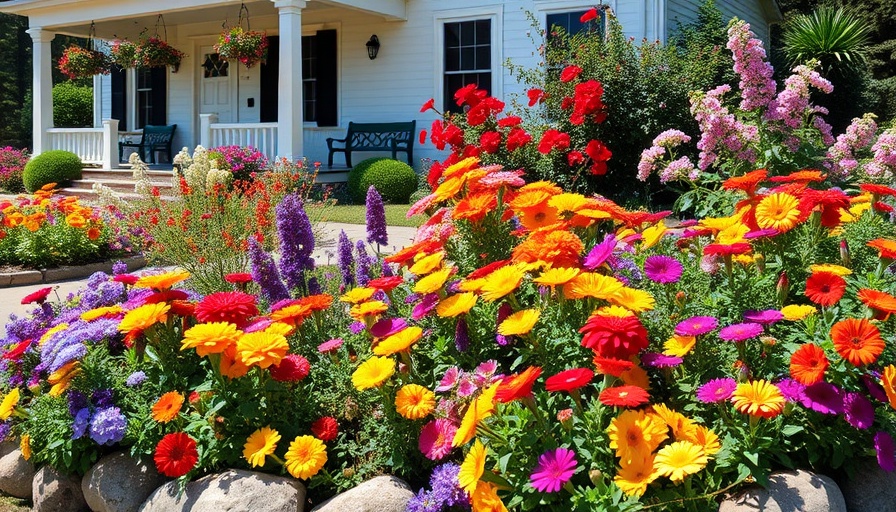
Transforming Your Backyard into a Pollinator Haven
In a world facing significant environmental challenges such as record temperatures and biodiversity loss, cultivating a pollinator-friendly yard is not just nurturing nature; it's a meaningful act of resistance against ecological decline. Within each of our spaces lies the potential to counter these threats by creating habitats that support vital pollinators like bees and butterflies.
Why Pollinator Gardens Matter
Pollinators are crucial in maintaining the ecosystems that support food production and plant diversity. Every time we choose to utilize our gardening practices for good, we contribute to a larger movement of conservation. When we create inviting environments for these creatures, we can help halt the alarming decline of key species brought about by habitat loss and pesticide use.
The Ease of Creating a Pollinator Garden
The best part about establishing a pollinator-friendly garden is that you may be closer than you think! Many of us already have the three essential components for a flourishing habitat:
- Flowering Plants: Attract pollinators by planting perennials that bloom throughout the seasons.
- Nesting Materials: Incorporate natural elements like hollow stems and log piles to provide sanctuary for resting pollinators.
- Nutritional Hosts: Ensure you have native plants that cater to the caterpillars of butterflies and moths.
By also reducing or eliminating chemical pest controls, we can significantly enhance these creatures' well-being within our yards.
Diversifying Your Plants
Spicing things up in the garden can lead to greater biodiversity. Stronger, diverse ecosystems attract a variety of pollinators, ensuring they find the resources they need for survival. Some pollinators, like honeybees, are generalists and will visit many types of flowers, while others like specialized plant caterpillars depend wholly on specific host plants. While planting, remember to:
- Plan for continuous bloom throughout the seasons.
- Include both native and wildflowers that resonate with your local pollinator species.
Tracking Biodiversity: A Personalized Journey
The impact of your gardening efforts can be both enriching and quantifiable. Keep a journal or take notes about the types of pollinators visiting your garden. Over time, you'll discover how different plants bring varying species to your patch. Not only is this practice enjoyable, but it also fosters a deeper connection with nature.
Shared Responsibility in Environmental Stewardship
Each of us holds a piece of responsibility in fostering ecological health. When we share our knowledge and experiences within our communities, we can inspire collective action toward maintaining and improving local ecosystems. Groups dedicated to gardening initiatives and sustainable practices can provide resources and support, encouraging more individuals to create their own pollinator spaces.
Why It’s Time to Act Now
The climate crisis is not just a headline but a real threat that affects everyone. By updating our home environments to include eco-friendly practices, like planting diverse gardening landscapes, we efficiently contribute to habitat restoration. And, with simple practices like composting and water conservation, we further our commitment to sustainability—all while enjoying the process of gardening.
Encouraging Others to Join the Movement
Consider this an invitation: share the journey of your pollinator garden. Use social media to inspire friends and family, organizing neighborhood gardening days or workshops. These connections solidify the idea that each small contribution adds up to a larger solution.
Ready to Get Involved?
Let’s transform our outdoor spaces into thriving habitats for pollinators, contributing positively to our environment. Whether you possess a sprawling garden or a quaint balcony, your efforts matter.
Take the next step towards a flourishing ecosystem that enlightens and nourishes. Discover guides, resources, and community initiatives that lead to collective action for an ecological restoration. Join the movement and cultivate hope in bloom!
 Add Row
Add Row  Add
Add 




Write A Comment